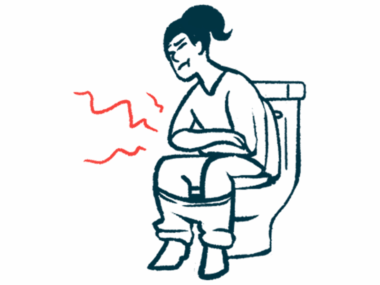Nerve stimulation for bladder issues also can make sex more enjoyable
Study into PTNS given women with RRMS finds gains in both areas of concern
Written by |

Percutaneous tibial nerve stimulation (PTNS), a nonsurgical treatment that delivers mild electrical impulses to a nerve in the ankle, significantly reduced bladder activity and improved sexual function for women with relapsing-remitting multiple sclerosis (RRMS), according to a clinical trial.
While PTNS is designed to modulate neural mechanisms involved in bladder dysfunction, the researchers found that it may help with sexual relations, independently of its effects on urinary symptoms.
“These findings support the use of PTNS as a promising non-invasive alternative for managing these conditions,” the researchers wrote, though they added that “further randomized controlled trials with larger sample sizes and longer follow-up periods are needed to confirm these results.”
Trial details were in the study, “Percutaneous Tibial Nerve Stimulation’s Impact on Sexual Function in Female Patients with Neurogenic Detrusor Overactivity, Sexual Dysfunction, and Multiple Sclerosis,” published in the Journal of Clinical Medicine.
Bladder control – and sexual enjoyment – can be affected by multiple sclerosis
MS is caused by a misguided immune attack on the myelin sheath, the protective coating around nerve fibers in the brain and spinal cord. This leads to disease symptoms such as numbness and tingling, fatigue, walking difficulties, pain, and vision problems.
People with MS also commonly experience bladder problems due to neurogenic detrusor overactivity (NDO). The condition causes the detrusor muscle in the bladder to contract involuntarily and frequently, with resulting frequent urination or difficulty urinating.
While damage to nerve fibers also can lead to sexual dysfunction, including decreased desire or sensations and difficulty achieving orgasm, sexual problems in MS also might be due to other causes, from bladder dysfunction to the effects of certain medications.
PTNS stimulates the tibial nerve, with impulses traveling to spinal nerve roots
PTNS is a nonsurgical treatment option for an overactive bladder. It involves placing a slim needle electrode in the ankle close to the tibial nerve, which supplies motor and sensory nerves to the back of the lower leg and foot. When stimulated, impulses travel up the tibial nerve to the nerve roots in the spine, intending to block abnormal signals from the bladder and prevent bladder spasms.
A team led by researchers in Greece sought to determine whether PTNS would help both bladder and sexual problems in a group of 65 women with stable RRMS. All were in ongoing relationships and sexually active for at least a month before enrollment, which continued throughout the study.
Participants received two PTNS sessions each week for six weeks, followed by one weekly session for an additional six weeks. Assessments of urinary symptoms, sexual function, and disability were conducted before PTNS and after all 12 weeks of treatment.
Bladder symptoms were evaluated using the OAB-v8 questionnaire, a patient-reported assessment of overactive bladder. Sexual function was assessed using the Female Sexual Function Index (FSFI), a widely used questionnaire to evaluate female sexual health. Distress associated with sexual problems was gauged by the Female Sexual Distress Scale-Revised (FSDS-R).
Based on FSFI and FSDS-R scores, 21 women had sexual dysfunction with distress, 19 had sexual dysfunction without sexual distress, and 25 reported neither sexual dysfunction nor distress. A group of 20 patients who declined PTNS served as controls.
After treatment, reports of fewer bladder spasms and greater satisfaction
After 12 weeks of treatment, overall urinary function significantly improved for 38 of the 65 participants (58.5%), as indicated by a drop in OAB-v8 scores, whereas no changes were seen in the control group. Improvements occurred regardless of sexual dysfunction status.
Among those with sexual problems with or without distress, sexual function significantly improved across multiple FSFI domains — desire, arousal, lubrication, orgasm, satisfaction, and pain. Among those without sexual dysfunction, satisfaction significantly improved with PTNS.
The treatment also alleviated distress in 42.9% of the women with sexual dysfunction and distress before PTNS. No changes were noted in the other two groups.
Regarding side effects, two participants experienced a worsening in urinary symptoms after PTNS, which were temporary and resolved on their own. Five patients reported temporary pain or numbness during stimulation, which was managed by reducing stimulation intensity.
“PTNS has emerged as a valuable treatment option for improving both sexual function and urinary symptoms in female MS patients with NDO and [female sexual dysfunction],” the researchers wrote.
“The significant improvements observed in FSFI scores across multiple domains suggest that PTNS may address sexual dysfunction independently of urinary symptom improvement,” they concluded, noting that gains in these scores seen with treatment “align with numerous studies that highlight PTNS’s potential” to alleviate problems with sexual function due to MS.






